Q
What is the Tyre Pressure of BYD M6?
The recommended standard tire pressure for the BYD M6 usually ranges from 2.2 to 2.5 bar (32 to 36 psi). The specific values may vary slightly depending on vehicle configuration, tire model, or load conditions. It's advisable to refer to the owner's manual or the tire pressure label on the door frame for accurate data. In Malaysia's tropical climate, tire pressure increases slightly as the temperature rises. Therefore, it's most accurate to measure the tire pressure when the tires are cold, and avoid adjusting the tire pressure immediately after exposure to intense sunlight. Regularly checking tire pressure not only enhances driving safety and comfort but also extends tire life and optimizes fuel efficiency. Especially during long - distance drives or when the vehicle is fully loaded, make sure the tire pressure meets the manufacturer's recommended values. If non - original tires are used, note that different brands or models of tires may have specific pressure requirements. It's recommended to consult a professional technician for adjustments. In addition, although the Tire Pressure Monitoring System (TPMS) can provide real - time alerts, it's still a necessary maintenance practice to manually check the tire pressure at least once a month.
Special Disclaimer: This content is published by users and does not represent the views or position of PCauto.
Related Q&A
Q
What Segment is BYD M6?
The BYD M6 is a mid - sized MPV (Multi - Purpose Vehicle) that caters mainly to family users and business needs. It offers a spacious 7 - seat layout and a comfortable riding experience. In the Malaysian market, this type of vehicle is usually classified as a D - Segment MPV, competing at the same level as models like the Toyota Innova and Honda BR - V. It's a great fit for consumers who value space practicality and versatility.
The BYD M6 is equipped with efficient electric or hybrid systems, which aligns with the global trend of energy conservation and environmental protection. Meanwhile, its intelligent features and safety standards have reached the mainstream level. For instance, it comes with an intelligent driving assistance system and multiple airbags.
When Malaysian consumers choose an MPV, apart from considering space and comfort, they also need to pay attention to fuel economy, maintenance costs, and local after - sales support. As an emerging electric vehicle brand, BYD's dealer network and service system in Malaysia are gradually being improved, bringing more convenience to car owners.
Q
What is the Reslae Value of BYD M6?
The used car resale value of the BYD M6 in Malaysia is affected by various factors, including the vehicle's age, mileage, maintenance status, and market demand. Generally speaking, the resale value of BYD models in the Malaysian market is at a medium level. It may be slightly lower compared to Japanese brands. However, in recent years, with the popularization of electric vehicle technology and the improvement of brand recognition, the used car value has gradually become more stable.
As an MPV, the BYD M6 is quite popular among family users due to its spacious interior and practicality. If the vehicle is in good condition and has been regularly maintained, it can still remain competitive when resold. Additionally, the Malaysian government's policy support for new energy vehicles may also indirectly affect the performance of the used car market. For example, tax - exemption or subsidy policies can enhance the attractiveness of new cars, which in turn causes fluctuations in used car prices.
It is recommended that car owners assess the vehicle's condition through professional platforms before selling and keep complete maintenance records to maximize the residual value. For potential buyers, they can refer to the quotes on local mainstream trading platforms or from dealers when considering the used car price of the BYD M6. At the same time, they should pay attention to checking the battery health (if it is an electric version) and the wear and tear of mechanical parts to ensure that they get good value for their money.
Q
What is the PCD Size of BYD M6?
The PCD (Pitch Circle Diameter) size of the BYD M6 is 5 x 114.3 mm, which is a common specification for many Japanese and some Asian models in the Malaysian market and is suitable for most mainstream wheels. PCD is a crucial parameter for wheel installation. If the size doesn't match, it may result in unstable installation or vibrations during driving. Therefore, when replacing wheels or upgrading tires, it's essential to confirm this data.
In addition to PCD, you also need to pay attention to the offset (ET value) and the center bore diameter of the wheels. These parameters together affect the vehicle's handling and safety. As a practical MPV, the original - factory wheels of the BYD M6 are designed to balance comfort and durability. If the owner wants to make personalized modifications, it is recommended to choose wheel products that meet the original - factory specifications or have professional certifications to ensure driving safety and maintain the vehicle's performance.
In Malaysia's wet and rainy climate, you can also consider choosing wheels made of anti - rust materials to extend their service life.
Q
Does BYD M6 Have Apple Carplay?
Currently, the configuration information of the BYD M6 in the Malaysian market shows that this model doesn't come with the Apple CarPlay feature natively. However, car owners can achieve this function by retrofitting a compatible third - party module or upgrading the in - car infotainment system later. For Malaysian users, Apple CarPlay is a very practical configuration. It can seamlessly connect the commonly used functions of an iPhone, such as navigation, music, and calls, to the in - car screen, enhancing driving convenience. If car owners have a high demand for this function, it is recommended to consult local dealers in detail before purchasing a car to learn about the latest in - car system updates or officially supported modification plans.
In addition, as an MPV mainly targeting family use, the BYD M6 performs well in terms of space and comfort, making it suitable for the usage scenarios of multi - member families in Malaysia. Its electrified version also aligns with the local government's policy direction of promoting green travel. With the rapid development of in - car connectivity technology, more models may offer Apple CarPlay and Android Auto as standard features in the future. Consumers can give priority to these models when making a purchase.
Q
What is the Tyre Brand of BYD M6?
The original tire brands of the BYD M6 in the Malaysian market may vary depending on different years and configurations. However, it is common to see well - known international tire brands such as Michelin, Goodyear, or Continental being selected. These brands are renowned for their wear resistance and quietness, which meet the comfort needs of MPV models. As a brand that emphasizes user experience, BYD usually selects high - quality tires that match the vehicle's positioning to ensure driving safety and performance.
For Malaysian users, the tropical climate places high demands on tires. It is recommended to regularly check the tire pressure and tread depth. On wet roads, pay attention to the tire's drainage performance. If you need to replace the tires, you can refer to the original factory specifications (such as 215/55 R17), and it is advisable to give priority to tires with the "Made for ASEAN" label. These products have optimized rubber formulations and tread designs for the hot and rainy environment in Southeast Asia, which can improve wet grip and durability. If you are not sure about the original tire model, you can refer to the vehicle manual or check the specific configuration information through the official website of BYD Malaysia.
Q
Is BYD M6 a Good Car? Learn the Pros and Cons Here
As an MPV model, the BYD M6 is comparatively competitive in the Malaysian market. Its advantages include a spacious 7-seater space design, which is suitable for family outings or business needs. Meanwhile, the electric technology it is equipped with reflects BYD's advantages in the new energy field, offering low operating costs and environmental protection features. The in - car configurations such as the large - sized touchscreen and smart connectivity functions also meet the needs of modern users.
However, its drawbacks may lie in the relatively low brand awareness compared to its Japanese or German counterparts. Some consumers have concerns about its after - sales network and resale value. In addition, although the battery safety of the MPV model in Malaysia's rainy climate has passed international certifications, users still need to pay attention to regular maintenance.
For Malaysian consumers considering new energy MPVs, it is recommended to compare fuel - powered versions of peer models such as the Toyota Innova or Honda Odyssey. They should comprehensively evaluate based on their own charging conditions and usage scenarios. The high cost - effectiveness and low - carbon characteristics of the BYD M6 may be more appealing in areas with policy incentives.
Q
What is the Width of BYD M6?
The width of the BYD M6 is 1,810 millimeters. This dimension is above average among MPVs in the same class, providing a relatively spacious interior, which is particularly suitable for the needs of Malaysian family users. As a model that emphasizes practicality, the BYD M6 takes into account both the flexibility of urban driving and the comfort of passengers in its body design. With a width of 1,820 millimeters (I assume there's a small error in the text, and it should be consistent here), it ensures enough lateral space for passengers in the second and third rows, and at the same time, it won't cause too much trouble on the relatively narrow streets or in parking lots in Malaysia.
It's worth mentioning that the width of MPV models usually ranges from 1,800 to 1,900 millimeters. Although a wider body can enhance the interior space, it may affect the convenience of daily driving. The width design of the BYD M6 strikes a perfect balance between the two.
For Malaysian consumers, when choosing an MPV, apart from the body size, they can also consider factors such as fuel - efficiency, seat flexibility, and the convenience of after - sales service. These factors will directly affect the daily driving experience.
Q
What is the Road Tax Price of BYD M6? How to Calculate?
The road tax price of the BYD M6 in Malaysia is mainly calculated based on the vehicle's engine capacity (cc). For the specific fees, you can refer to the official standards of the Malaysian Road Transport Department (JPJ). Currently, as an electric MPV, the BYD M6 enjoys preferential road tax policies for electric vehicles in Malaysia. The way to calculate the road tax for electric vehicles is different from that of traditional fuel - powered vehicles. It is usually based on the electric motor power (kW) or the vehicle weight, and the cost is much lower than that of fuel - powered vehicles in the same class. The specific amount needs to be confirmed through the JPJ official website or offline counters.
In addition, the Malaysian government also offers other incentives to promote the use of electric vehicles, such as import tax exemptions and subsidies for charging facilities. It is recommended that car owners thoroughly understand the relevant policies before making a purchase.
It should be noted that the road tax fees may vary slightly depending on the state or the nature of vehicle use (private or commercial). It is advisable to directly consult JPJ or BYD authorized dealers for the latest information. The popularity of electric vehicles in Malaysia is gradually increasing. Besides the road tax incentives, car owners can also enjoy lower maintenance costs and environmental benefits, which is one of the reasons why more and more consumers are considering electric vehicles.
Q
What is the Weel Size of BYD M6?
The wheel hub size of the BYD M6 is 215/55 R17. This size not only provides good grip but also takes comfort into account, making it suitable for the diverse road conditions in Malaysia. A tire width of 215 millimeters ensures driving stability, and a aspect ratio of 55 strikes a balance between absorbing road vibrations and providing support during cornering. The 17 - inch wheel hub size also conforms to the mainstream configuration of MPVs in this class. For Malaysian consumers, tires of this specification are quite common in the local market, which makes subsequent replacement and maintenance relatively convenient. It's worth mentioning that the wheel hub size directly affects the vehicle's handling, fuel economy, and ride comfort. Although larger wheel hubs look more dynamic visually, they may sacrifice some comfort. The size chosen by the BYD M6 strikes a good balance between practicality and comfort. In addition, given Malaysia's rainy climate, it is recommended to regularly check the tire tread depth to ensure drainage performance, which is particularly important for driving safety.
Q
Is BYD M6 Worth Buying? Check out Its Features Here
The BYD M6 is a model worth considering, with quite a few highlights. In terms of space, it has a length of 4,710mm and a wheelbase of 2,800mm. The 7-seat layout can meet the needs of multi-person travel, and the interior space is spacious and comfortable.
In terms of configuration, it is also quite rich. Standard safety features include ABS anti-lock braking and vehicle stability control. There are also six airbags that provide all-round protection. Some versions are equipped with active safety features such as lane change assist and lane departure warning systems.
As for power, you can choose between electric motors with a total power of 120kW and 150kW. The official pure-electric cruising ranges are 420km and 530km respectively, which can meet the needs of daily commuting and short trips. Moreover, the vehicle comes with a six-year or 150,000-kilometer warranty, and the battery has an eight-year or 160,000-kilometer warranty (with a health status of over 70%), eliminating potential concerns.
However, before making a decision, it is recommended to take a test drive at a dealership and determine whether it suits you according to your own needs and preferences.
Popular Cars
Model Year
Car Compare
Car Photo
Latest Q&A
Q
How much did a new 2018 beetle cost?
The 2018 Volkswagen Beetle had a starting price range of approximately RM120,000 to RM180,000, depending on the trim and options. The entry-level 1.2 TSI Design model was the most affordable, while the top-spec 2.0 TSI R-Line version approached RM180,000—though final pricing could vary with optional extras and dealer promotions.
As a timeless classic, the 2018 Beetle kept its retro charm but packed modern tech like a touchscreen infotainment system and active safety features. Under the hood, buyers could choose between the fuel-efficient 1.2T or the more spirited 2.0T engine.
Fair warning: Volkswagen discontinued the Beetle in 2019, so you’ll only find it on the used market now. That said, its iconic design and nostalgic appeal still make it a hit among collectors. If you’re eyeing a pre-owned model, always check the vehicle history and maintenance records to snag a solid deal.
Q
What engine does a 2018 VW Beetle have?
The 2018 Volkswagen Beetle offered two gasoline engine options across different markets. The primary powerplant was a 1.2-liter TSI turbocharged inline-four, delivering 105 horsepower and 175 Nm of torque, paired with a 7-speed DSG dual-clutch transmission. This compact forced-induction engine struck a balance between urban fuel efficiency and strong low-end torque.
Higher-spec variants featured an optional 1.4-liter TSI turbocharged unit, bumping output to 150 horsepower. Both engines adopted direct fuel injection and belonged to VW’s widely used EA211 modular family, featuring modern tech like lightweight aluminum blocks.
Though retaining its iconic silhouette, this generation Beetle actually shared its underpinnings with the Golf, inheriting the brand’s proven front-wheel-drive architecture. This platform commonality also translated to easier maintenance, as local dealerships were well-versed in servicing these powertrains thanks to extensive parts sharing across VW’s lineup.
Q
What are the different models of the 2018 VW Beetle?
The 2018 Volkswagen Beetle comes in three main trims: Classic, Trendline, and Sport. All models are powered by a 1.2-liter TSI turbocharged engine delivering 105 horsepower, paired with a 7-speed DSG dual-clutch transmission—perfect for city driving with its nimble handling and solid fuel efficiency.
The entry-level Classic trim rolls on 16-inch wheels and features a basic multimedia system. Stepping up to the Trendline adds 17-inch wheels, fog lights, and chrome accents. The Sport trim leans into its name with 18-inch wheels, a sport-tuned suspension, and unique interior color options.
This generation keeps the Beetle’s iconic retro curves but modernizes them with touches like LED daytime running lights. Inside, you’ll find color-matched dash panels, and with 310 liters of trunk space, it’s more practical than most small cars in its class.
Since the Beetline was discontinued in 2019, the 2018 model stands as the last new generation, making it a rising collector’s item—especially the convertible, which holds strong appeal in the used market. For maintenance, stick to routine service every 15,000 km or 12 months, and regular 95-octane fuel is all it needs.
Q
Does the 2018 Beetle have Apple CarPlay?
The 2018 Volkswagen Beetle did come equipped with Apple CarPlay, integrated into its Composition Media infotainment system. This allowed iPhone users to seamlessly connect for navigation, music, and other apps. The system also supported Android Auto, catering to different smartphone users with its intuitive and responsive interface—definitely a plus for convenience on the road.
That said, some early-production 2018 models might require a software update to activate the feature, so it’s worth checking with an official dealer to confirm your car’s specs or available upgrades. Also, wireless Apple CarPlay wasn’t standard across all trims; it depended on the factory-installed options.
For fans of classic styling who still want modern tech, the Beetle struck a nice balance between retro charm and everyday usability. Competitors like the Mini Cooper offered similar connectivity, but let’s be honest—the Beetle’s iconic design was always its standout feature.
Q
What is the fuel economy of the 2018 Beetle?
The 2018 Volkswagen Beetle's fuel efficiency varies by powertrain. The 1.2L TSI turbocharged version delivers a combined fuel consumption of around 5.5L/100km, while the 1.4L TSI model is slightly thirstier at approximately 6.0L/100km – both perform best with 95-octane petrol.
You'll likely see higher consumption in city driving, but it cruises efficiently on highways thanks to its classic aerodynamic design. For better mileage, stick to routine maintenance like cleaning the air filter and keeping tyres properly inflated. These small habits can help squeeze out extra kilometres per litre.
Though discontinued, the 2018 Beetle remains popular in the used car market – its iconic styling and decent fuel economy make it a practical daily driver. Just remember real-world figures depend heavily on driving style and road conditions, so check owner forums for real-life feedback.
View MoreRelated News
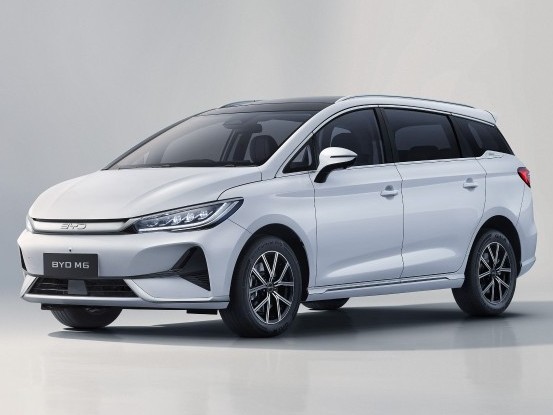
BYD M6: Spacious MPV for Comfortable Family Journeys
WilliamApr 29, 2025
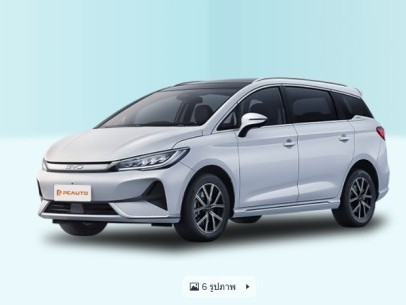
BYD M6 Shines at Thailand Motor Expo 2024: 7-seater Large Space, Pure Electric Range of 420 km
WilliamDec 3, 2024
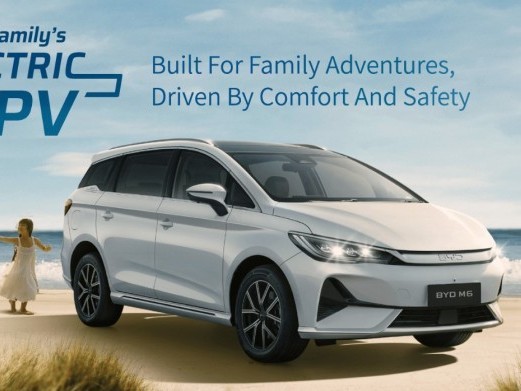
Starting at RM109,800! BYD M6 pure electric MPV debuts, catering for the whole family outing!
JamesOct 15, 2024

BYD entered Malaysia for three years and has sold a total of 25,000 electric vehicles
MichaelDec 10, 2025

Leapmotor B10 VS BYD Atto 3, a showdown between two automakers adept at price wars
WilliamNov 27, 2025
View More


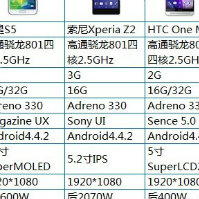




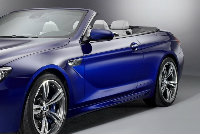




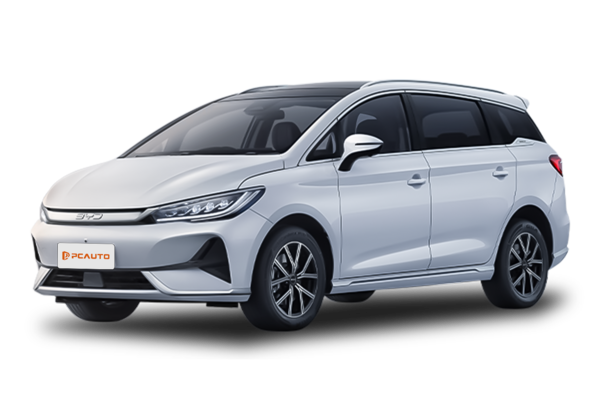





Pros
Cons